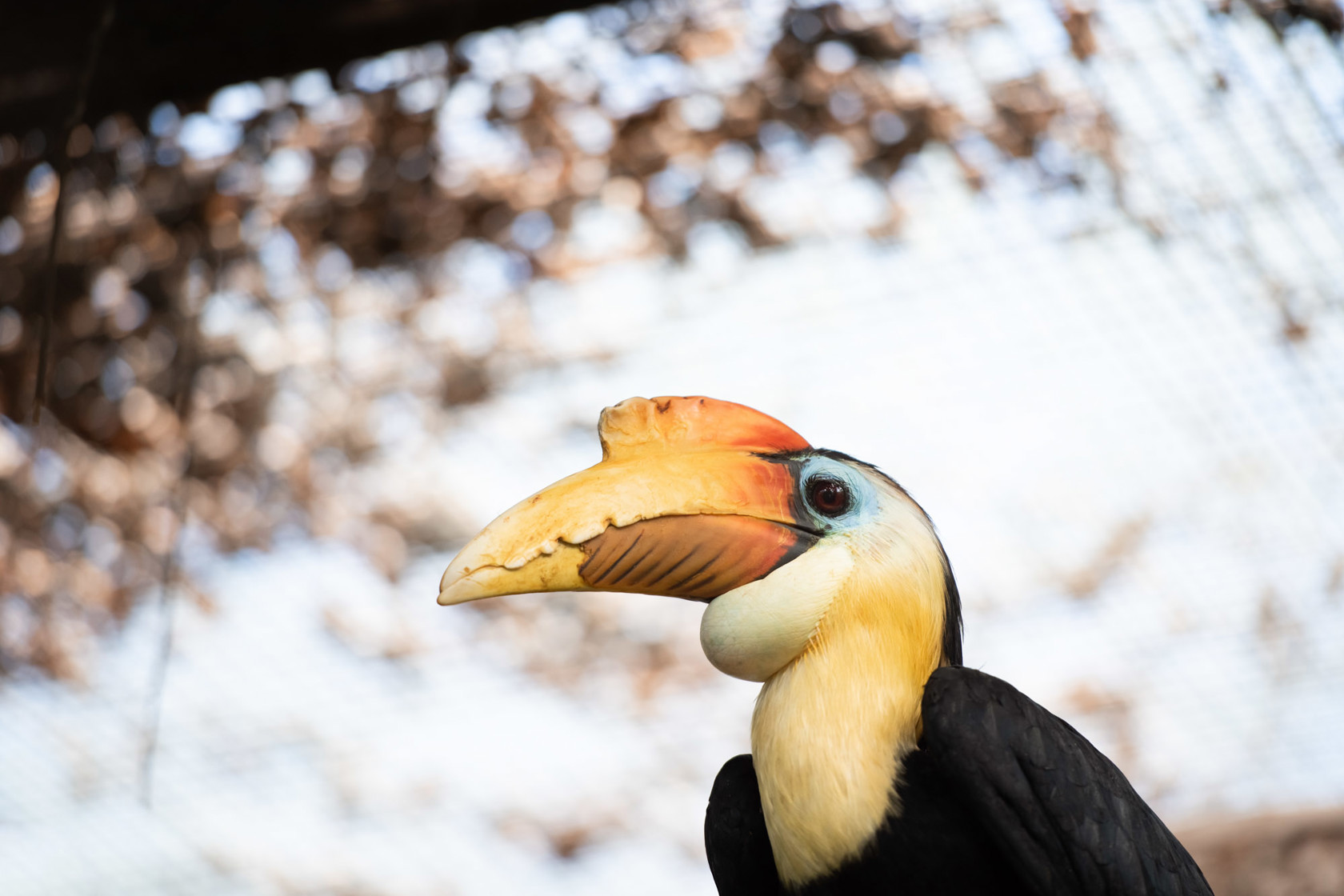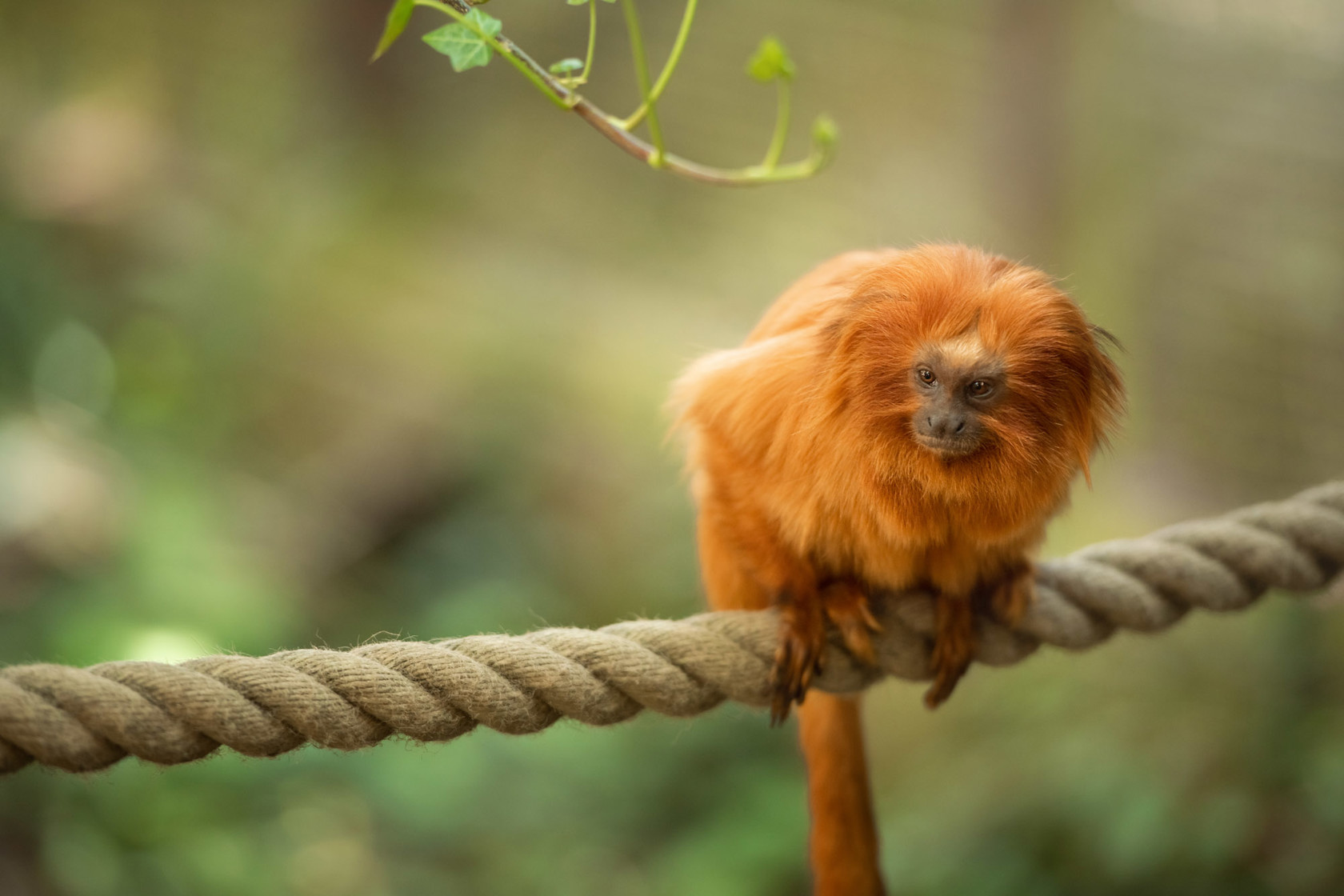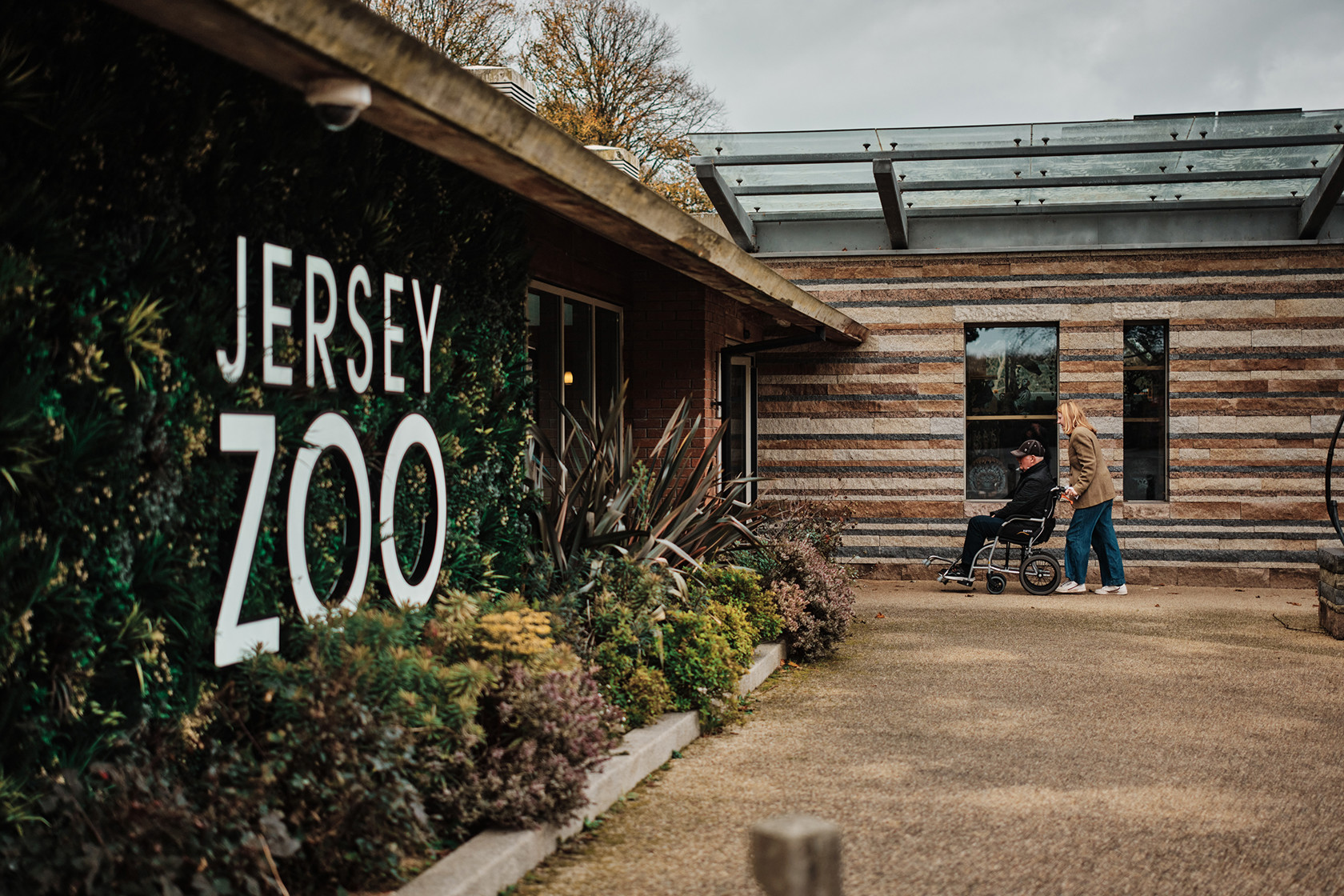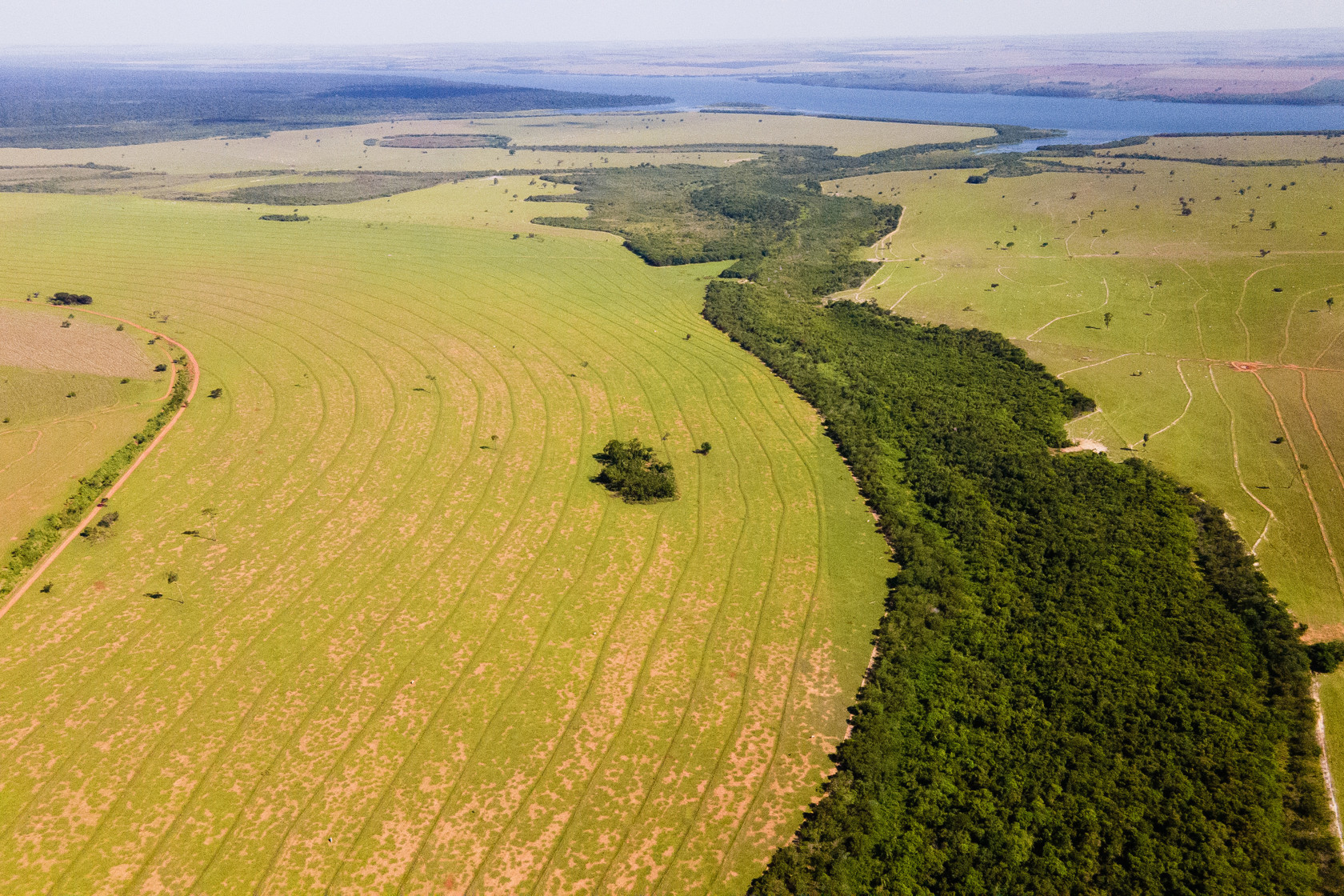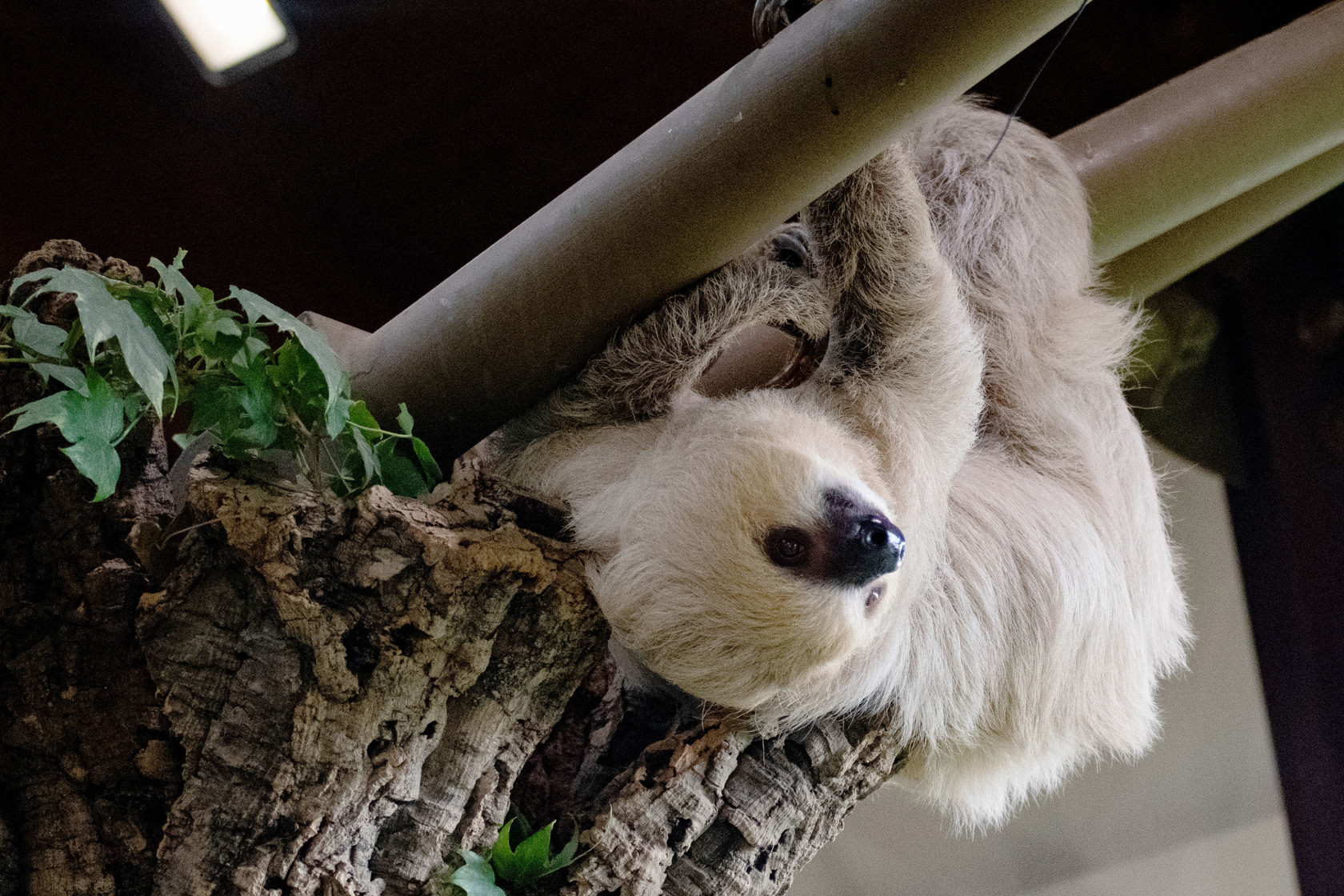Meet the most threatened mammal in Central America
With a long tongue and large bushy tail, giant anteaters are incredibly unique animals. They are the largest of four living anteater species, all found in Central and South America. Giant anteaters use their long tongue and sticky saliva to pull ants and termites from their nests. You can find Zena, our female giant anteater, in the South American House alongside our sloths.

2ft
tongue length
35-60kg
average weight
30,000
ants eaten daily
Learn more about Zena from keeper Fern
As part of our Rewild Carbon project, we are working together with our conservation partners, ICAS – Wild Animal Conservation Institute, to protect species in Brazil.
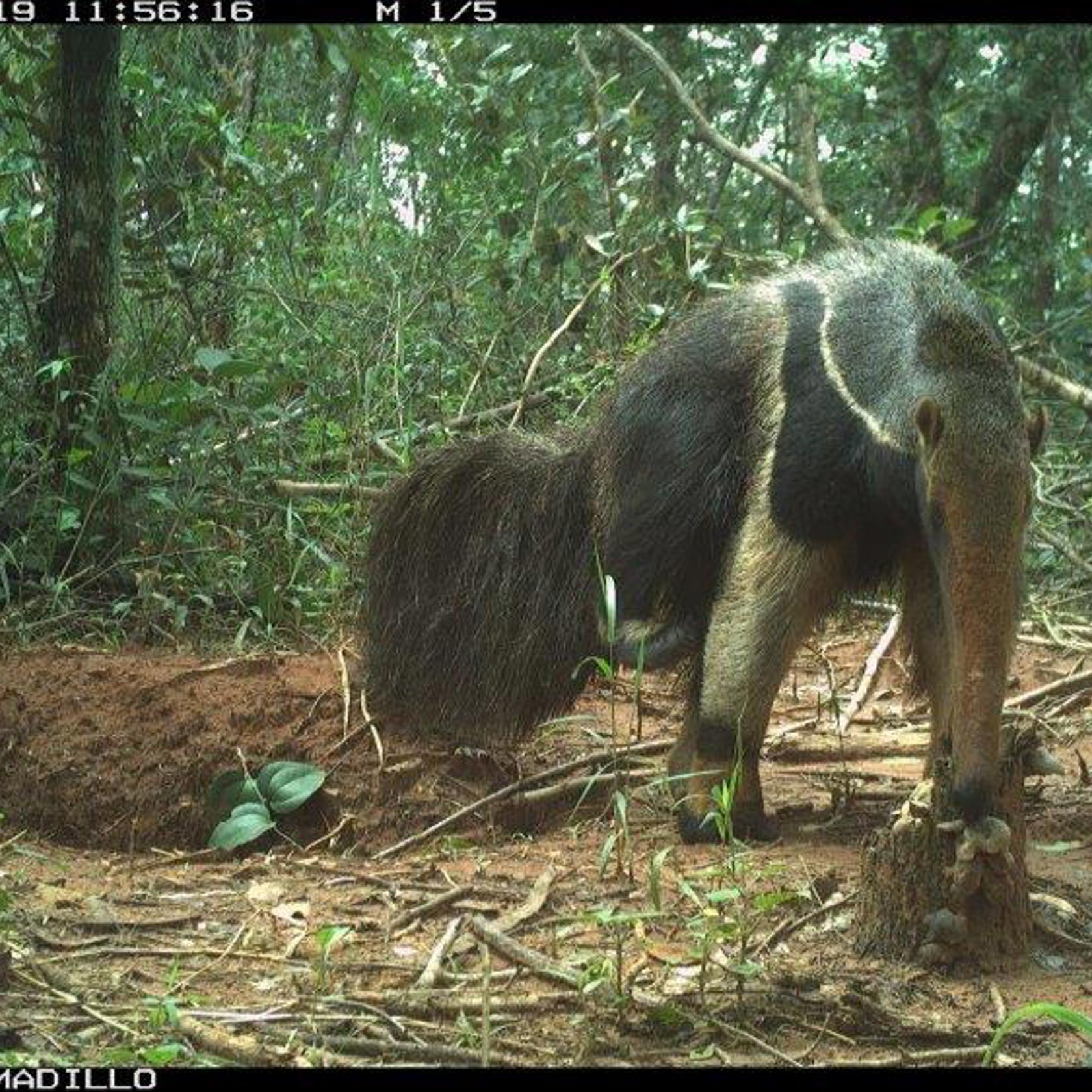
Helping giant anteaters in the wild
Around half of the grasslands and forests have been lost in the Cerrado region, the area in which we are working, due to increasing agriculture. Habitats here have also been fragmented by roads. Giant anteaters are active at night, so are amongst the species most frequently killed by traffic. Their long-term survival is under threat.
Through Rewild Carbon, we plan to fund radio collars for six orphan anteater pups rescued and rehabilitated by ICAS and their project partners. This will allow them to be monitored after being released into the wild. Analysing their movement will give us a better understanding of how young anteaters disperse through the landscape and what barriers they face. The results will help identify areas for habitat conservation and establishing tree corridors to protect giant anteaters and other species.
Remote camera photo by ICAS.
Support our conservation work

